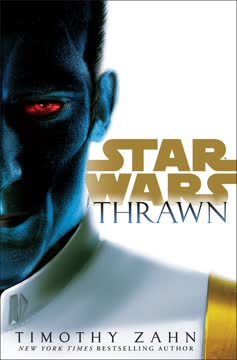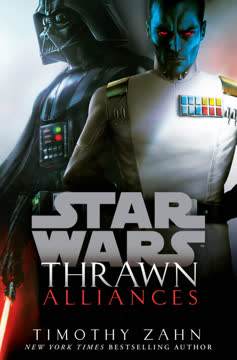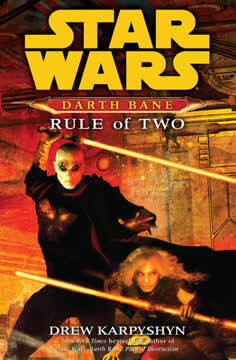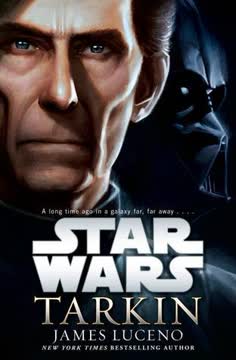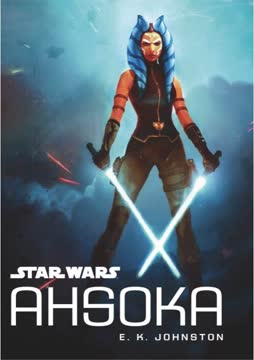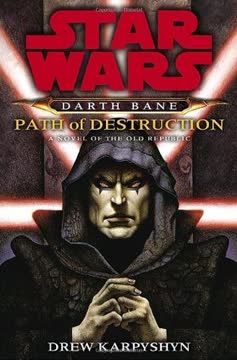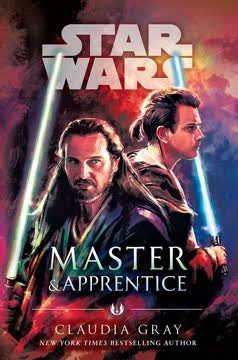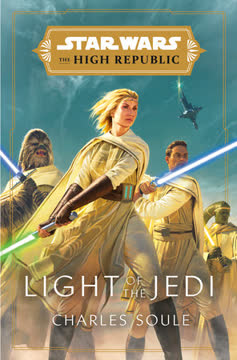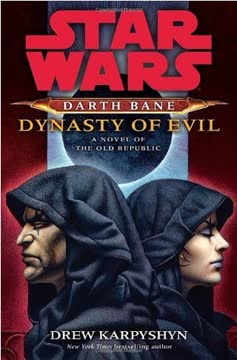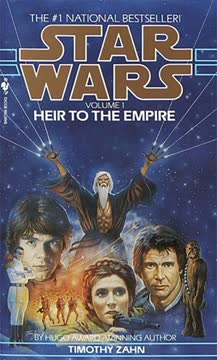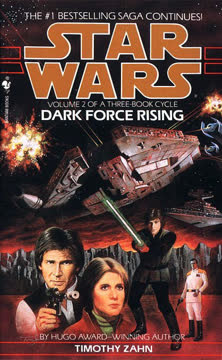Plot Summary
Exile and Discovery
Mitth'raw'nuruodo, known as Thrawn, is exiled from the Chiss Ascendancy for his controversial military philosophy of preemptive strikes. Alone on a remote planet, he survives by his wits until discovered by the Imperial Navy. His calculated attacks on the Imperial encampment, using primitive means and psychological warfare, draw the attention of Captain Parck and Cadet Eli Vanto. Thrawn's intelligence and tactical genius are quickly recognized, and he is brought aboard the Star Destroyer Strikefast. Through a combination of language skills and cultural knowledge, Eli becomes Thrawn's translator and aide, setting the stage for a partnership that will shape both their destinies.
The Chiss and the Empire
Thrawn's introduction to the Empire is fraught with suspicion and curiosity. His blue skin and red eyes mark him as a Chiss, a species thought to be myth. Despite initial distrust, Thrawn's military acumen impresses Captain Parck and, eventually, Emperor Palpatine himself. Thrawn's exile is revealed to be a strategic move, and he offers the Emperor knowledge of threats lurking in the Unknown Regions. The Emperor, intrigued by Thrawn's potential, brings him into the Imperial fold, assigning Eli as his permanent aide and translator. Thrawn's presence in the Empire signals a new era of strategic thinking and foreshadows the rise of a formidable leader.
Cadet and Commander
Thrawn and Eli are sent to the Royal Imperial Academy, where they are met with hostility and prejudice. Thrawn's alien status and Eli's Wild Space origins make them targets for Core World elitism. Despite social and institutional obstacles, Thrawn's tactical brilliance and Eli's logistical expertise allow them to excel. Thrawn's rapid advancement, including a rare direct promotion to lieutenant, stirs resentment among peers and instructors. Together, they navigate the treacherous social hierarchy, learning that survival in the Empire requires not just skill, but political savvy and resilience.
Alien in the Academy
Thrawn's time at the Academy is marked by both overt and covert hostility. He faces orchestrated attacks, both verbal and physical, from fellow cadets. Rather than retaliate, Thrawn uses these incidents to his advantage, turning traps into opportunities and exposing his enemies' weaknesses. Eli, initially reluctant, becomes an indispensable ally, learning to anticipate and counter the subtle and not-so-subtle machinations of their rivals. Thrawn's unique approach to conflict—studying art, culture, and psychology—sets him apart, while Eli's growing understanding of Imperial politics cements their partnership.
Social Hierarchies and Prejudice
The Empire's rigid social hierarchy is laid bare, with nonhumans and Outer Rim natives relegated to the margins. Thrawn and Eli's outsider status forces them to confront the realities of Imperial bigotry. Thrawn's promotions are met with skepticism, and Eli's career is repeatedly stalled by political interference. The two learn that advancement in the Empire is as much about navigating social and political currents as it is about competence. Their experiences at the Academy and beyond reveal the deep-seated prejudices that shape Imperial society and foreshadow the challenges they will face as they rise through the ranks.
Political Machinations
Parallel to Thrawn's rise, Arihnda Pryce's journey from Lothal to Coruscant is a study in ambition, manipulation, and survival. After losing her family's mining company to political intrigue, Pryce leverages her intelligence and ruthlessness to climb the Imperial ladder. She navigates the treacherous world of senatorial aides, advocacy groups, and ISB informants, ultimately betraying friends and rivals alike to secure her position. Her alliance with Grand Moff Tarkin and her willingness to sacrifice anything for power make her both a formidable ally and a dangerous adversary.
The Art of War
Thrawn's approach to warfare is unique: he studies the art and culture of his adversaries to predict their strategies and weaknesses. Whether facing pirates, insurgents, or rival officers, Thrawn's ability to see patterns where others see chaos gives him a decisive edge. His campaigns against smugglers, rebels, and even fellow Imperials are marked by precision, creativity, and a deep understanding of human (and nonhuman) nature. Eli, learning from Thrawn, becomes adept at logistics and supply, complementing Thrawn's strategic vision with practical expertise.
Enemies and Allies
As Thrawn and Eli rise through the ranks, they encounter a host of enemies and reluctant allies. From the ambitious Captain Rossi to the cunning Nightswan, each adversary tests Thrawn's resolve and ingenuity. Nightswan, in particular, emerges as a worthy opponent—a former Mining Guild tactician turned insurgent leader, whose operations threaten Imperial stability. Thrawn's pursuit of Nightswan becomes a personal and professional obsession, culminating in a series of confrontations that blur the line between enemy and adversary. Meanwhile, alliances with figures like Colonel Yularen and Arihnda Pryce prove both beneficial and perilous.
The Rise of Thrawn
Thrawn's victories in the field—against pirates, insurgents, and rebellious worlds—earn him rapid promotions and the grudging respect of the Imperial hierarchy. His command of the Chimaera, an Imperial Star Destroyer, marks his arrival as a major force within the navy. Yet, his success breeds resentment among traditionalists and xenophobes, who conspire to undermine him at every turn. Eli's long-delayed promotion finally arrives, a testament to both his loyalty and Thrawn's determination to reward merit over politics. Together, they embody a new model of leadership—one that values insight, adaptability, and mutual respect.
Shadows of Rebellion
The Empire's grip on the Outer Rim is threatened by a wave of insurgencies, many orchestrated or inspired by Nightswan. Thrawn's campaigns against these rebels are marked by both brilliance and brutality. The Batonn crisis, in particular, becomes a crucible for Thrawn, Eli, and Pryce. As the Empire moves to crush the insurgents, the lines between military necessity and moral compromise blur. The destruction of Creekpath, with its massive civilian casualties, exposes the dark side of Imperial order and the personal costs of victory. Thrawn's promise to minimize unnecessary deaths is tested, and Pryce's ambition leads her to make irreversible choices.
The Batonn Crisis
The showdown at Batonn is the climax of Thrawn's and Nightswan's rivalry. Thrawn's strategic genius is matched by Nightswan's cunning, leading to a deadly game of deception, infiltration, and sacrifice. Arihnda Pryce, caught between personal loyalty and political ambition, makes a fateful decision that results in the deaths of thousands, including many civilians. Thrawn's efforts to broker a less bloody resolution are thwarted by the intransigence of both the Empire and the insurgents. The aftermath of Batonn cements Thrawn's reputation as both a savior and a butcher, while Pryce secures her power at a terrible cost.
The Price of Victory
Victory at Batonn brings promotions and accolades, but also deep scars. Thrawn is made Grand Admiral, the highest rank in the Imperial Navy, but is haunted by the destruction and loss of life he could not prevent. Eli, finally recognized for his service, is offered a new path—one that will take him far from the Empire. Pryce, now governor of Lothal, consolidates her power but is forever marked by the choices she made. The cost of victory is measured not just in lives lost, but in the erosion of ideals and the hardening of hearts.
The Emperor's Gambit
Thrawn's audience with Emperor Palpatine reveals the true scope of the Empire's ambitions: the construction of the Death Star, a weapon of unimaginable power. Thrawn, ever the strategist, warns against overreliance on such a singular force, advocating instead for a flexible and resilient navy. The Emperor, amused and wary, assures Thrawn that the Chiss are not his target—yet the conversation is a reminder of the precariousness of power and the dangers of unchecked ambition. Thrawn's loyalty to both the Empire and the Chiss Ascendancy is tested, as he navigates the treacherous waters of Imperial politics and galactic destiny.
The Making of a Grand Admiral
Thrawn's journey from exiled Chiss to Grand Admiral is a testament to the power of intellect, adaptability, and vision. His rise is marked by both triumph and tragedy, as he outmaneuvers enemies, forges unlikely alliances, and reshapes the Empire's approach to war. Yet, his outsider status and unorthodox methods ensure that he will always be both revered and reviled. Eli's departure to serve the Chiss marks the end of an era, while Pryce's consolidation of power on Lothal sets the stage for future conflicts. The legacy of Thrawn is one of brilliance, complexity, and enduring influence.
The Paths of Power
The final chapters explore the divergent paths of Thrawn, Eli, and Pryce. Thrawn, now Grand Admiral, stands at the pinnacle of Imperial power, yet remains an outsider, ever watchful for threats both within and beyond the Empire. Eli, having learned all he can from Thrawn, embarks on a new journey to serve the Chiss Ascendancy, carrying with him the lessons of his mentor and friend. Pryce, having sacrificed everything for power, is left to rule a world she no longer recognizes, haunted by the ghosts of her past. Each has achieved their goals, but at a cost that will shape their destinies—and the fate of the galaxy.
Friends, Foes, and Legacy
In the end, Thrawn's story is one of transformation—of himself, those around him, and the Empire he serves. His friendship with Eli, forged in adversity and mutual respect, stands as a rare beacon of loyalty in a galaxy defined by betrayal and ambition. The lessons of art, culture, and strategy that Thrawn imparts ripple outward, influencing the course of history. Yet, the shadows of regret, loss, and moral compromise linger. The legacy of Thrawn, Eli, and Pryce is a reminder that greatness is never without cost, and that the choices we make—whether for power, loyalty, or survival—echo long after the battles are won.
Characters
Thrawn (Mitth'raw'nuruodo)
Thrawn is a Chiss exile whose brilliance in strategy and understanding of art and culture make him a singular force within the Empire. His calm, analytical mind allows him to see patterns and anticipate enemy moves, often turning the tide of battle with minimal resources. Thrawn's outsider status—both as a nonhuman and as someone from the Unknown Regions—makes him a target of suspicion and prejudice, yet he rises rapidly through the ranks due to his undeniable results. Psychologically, Thrawn is driven by a sense of duty to both the Chiss and the Empire, always seeking to minimize unnecessary loss of life, even as he is forced to make hard choices. His relationship with Eli Vanto is one of mutual respect and mentorship, and his interactions with figures like the Emperor and Arihnda Pryce reveal a complex understanding of power, loyalty, and the costs of victory.
Eli Vanto
Eli Vanto begins as a supply cadet from Wild Space, thrust into the spotlight by his linguistic skills and proximity to Thrawn. Initially resentful of his stalled career, Eli grows into a capable officer, learning to navigate both the tactical and political landscapes of the Empire. His loyalty to Thrawn is unwavering, and he becomes the admiral's confidant, translator, and conscience. Eli's psychological journey is one of self-discovery, as he moves from insecurity and frustration to confidence and purpose. Ultimately, he chooses to leave the Empire to serve the Chiss, carrying forward Thrawn's legacy and forging his own path as a leader and friend.
Arihnda Pryce
Arihnda Pryce's arc is one of ambition, betrayal, and the relentless pursuit of power. After losing her family's mining company to political intrigue, she claws her way up the Imperial hierarchy, sacrificing friends, allies, and her own morality. Pryce is fiercely intelligent and adaptable, using every tool at her disposal to secure her position as governor of Lothal. Her psychological profile is marked by a deep-seated need for control and recognition, as well as a capacity for ruthlessness that ultimately isolates her. Pryce's relationships—with her parents, with Tarkin, and with Thrawn—are transactional, and her greatest victory is also her greatest loss.
Nightswan (Nevil Cygni)
Nightswan is Thrawn's most formidable opponent, a former Mining Guild tactician turned rebel leader. He is a master of strategy and subterfuge, orchestrating a series of insurgencies and smuggling operations that challenge the Empire's authority. Nightswan's motivations are complex: he is driven by a sense of justice and a desire to protect the innocent, but is ultimately undone by the very chaos he seeks to control. His relationship with Thrawn is one of mutual respect and rivalry, and their final confrontation is as much a philosophical debate as a tactical duel. Nightswan's refusal to abandon his followers, even in the face of certain defeat, marks him as both a hero and a tragic figure.
Emperor Palpatine
Palpatine is the shadow behind the throne, orchestrating the rise of the Empire and the construction of the Death Star. His interactions with Thrawn are marked by a blend of curiosity, amusement, and wariness. The Emperor recognizes Thrawn's value as a strategist and as a bridge to the Unknown Regions, but also sees him as a potential threat. Palpatine's psychological profile is one of absolute control, cunning, and a willingness to use any means to achieve his ends. His conversations with Thrawn reveal the limits of power and the dangers of unchecked ambition.
Colonel Wullf Yularen
Yularen serves as a bridge between the military and intelligence communities, often acting as Thrawn's advocate and protector within the labyrinthine politics of the Empire. He is pragmatic, experienced, and unafraid to challenge authority when necessary. Yularen's relationship with Thrawn is one of mutual respect, and he often serves as a sounding board for the admiral's ideas and concerns. Psychologically, Yularen is driven by a sense of duty and a desire to see justice done, even as he navigates the moral ambiguities of Imperial service.
Karyn Faro
Faro is Thrawn's first officer and later captain of the Chimaera. She is competent, adaptable, and quick to learn from Thrawn's example. Faro's psychological journey mirrors Eli's in some ways, as she moves from skepticism to respect and loyalty. Her ability to execute Thrawn's complex plans and her willingness to challenge him when necessary make her an invaluable member of his command team.
Captain Parck
Parck is the first Imperial officer to recognize Thrawn's potential, bringing him into the Empire and advocating for his advancement. He is pragmatic and open-minded, willing to look beyond prejudice to see talent. Parck's relationship with Thrawn is that of mentor and sponsor, and his early support is crucial to Thrawn's rise.
Captain Filia Rossi
Rossi represents the dangers of political appointments and the limitations of traditional Imperial thinking. Her insecurity and resentment toward Thrawn's unorthodox methods create tension and conflict, highlighting the challenges faced by outsiders in the Empire. Rossi's psychological profile is marked by ambition, defensiveness, and a lack of adaptability.
Grand Moff Tarkin
Tarkin is the embodiment of Imperial ruthlessness and efficiency. His relationship with Pryce is transactional, and his interactions with Thrawn are marked by a blend of respect and rivalry. Tarkin's psychological profile is defined by his belief in order through fear, his willingness to use any means to achieve his goals, and his recognition of the value—and danger—of exceptional individuals like Thrawn.
Plot Devices
Outsider Perspective
The story is structured around the experiences of outsiders—Thrawn as a nonhuman, Eli as a Wild Space native, and Pryce as a provincial upstart—navigating the rigid hierarchies of the Empire. Their outsider status shapes their relationships, challenges, and strategies, forcing them to adapt and innovate in ways that insiders cannot. This device allows the narrative to explore themes of prejudice, ambition, and the costs of assimilation.
Art as Intelligence
Thrawn's unique approach to warfare—studying the art and culture of his adversaries—serves as both a plot device and a metaphor for deeper understanding. By analyzing patterns, motifs, and artistic choices, Thrawn is able to anticipate enemy moves and devise counter-strategies. This
Last updated:
FAQ
0. Synopsis & Basic Details
What is Thrawn about?
- A Chiss's Strategic Ascent: Thrawn chronicles the meteoric rise of Mitth'raw'nuruodo, an alien from the Unknown Regions, through the ranks of the Galactic Empire. Discovered in exile, his unparalleled tactical genius and unique approach to understanding adversaries through their art quickly catch the attention of Imperial officers.
- Unlikely Partnerships Forged: The narrative follows Thrawn's journey from a mysterious castaway to a formidable Grand Admiral, often through the eyes of his human aide, Eli Vanto. Their partnership navigates the Empire's xenophobia and rigid social hierarchies, revealing the complexities of loyalty and ambition.
- Galactic Intrigue and Hidden Threats: Beyond personal stories, the book delves into the Empire's political machinations, burgeoning rebellions, and the shadowy threats lurking in the Unknown Regions. It explores the moral ambiguities of power and the sacrifices made in the name of order, setting the stage for larger galactic conflicts.
Why should I read Thrawn?
- Masterclass in Tactical Brilliance: Readers seeking a deep dive into military strategy and psychological warfare will find Thrawn's methods captivating. Timothy Zahn's meticulous plotting and Thrawn's unique ability to deduce enemy intentions from cultural artifacts offer a fresh perspective on conflict in the Star Wars universe.
- Compelling Character Development: The novel offers rich character arcs, particularly for Thrawn and Eli Vanto, exploring themes of identity, loyalty, and the struggle against prejudice. Eli's journey from a reluctant aide to a capable officer, finding his own purpose, is a highlight for many readers.
- Expansive World-Building & Lore: Thrawn enriches the Star Wars canon by introducing the enigmatic Chiss Ascendancy and delving into the unexplored Unknown Regions. It provides crucial context for the Empire's internal politics and the looming threats that shape its destiny, making it essential for fans interested in the broader galactic narrative.
What is the background of Thrawn?
- Chiss Ascendancy's Strategic Exile: Thrawn originates from the Chiss Ascendancy, a powerful, isolationist civilization in the Unknown Regions. His "exile" is revealed to be a calculated strategic maneuver by the Chiss to infiltrate the nascent Galactic Empire and assess its potential as an ally against a greater, unnamed threat.
- Post-Clone Wars Imperial Expansion: The story is set in the early years of the Galactic Empire, following the collapse of the Republic after the Clone Wars. This period is characterized by Palpatine's consolidation of power, the suppression of dissent, and the Empire's aggressive expansion into the Outer and Mid Rims, creating fertile ground for both Thrawn's rise and the insurgencies he combats.
- Cultural and Political Landscape: The narrative highlights the Empire's inherent xenophobia and rigid social hierarchy, particularly on Core Worlds like Coruscant. This backdrop of prejudice and political maneuvering forms a constant challenge for Thrawn and Eli, forcing them to adapt and innovate to survive and advance.
What are the most memorable quotes in Thrawn?
- "To defeat an enemy, you must know them. Not simply their battle tactics, but their history, philosophy, art.": This quote, central to Thrawn's character and Thrawn analysis, encapsulates his unique approach to warfare. It emphasizes that true victory comes from deep cultural understanding, not just brute force, a recurring theme in Thrawn.
- "I am a warrior, Your Majesty. A warrior may retreat. He does not flee. He may lie in ambush. He does not hide. He may experience victory or defeat. He does not cease to serve.": Spoken to Emperor Palpatine, this line defines Thrawn's unwavering commitment to duty and his personal code of honor. It reveals the depth of his resolve and his distinct philosophy, even when facing the galaxy's ultimate power.
- "A friend need not be kept either within sight or within reach. A friend must be allowed the freedom to find and follow his own path.": This profound statement, found in Thrawn's journal, offers a rare glimpse into his personal philosophy on friendship and loyalty. It underscores his respect for individual autonomy, particularly in his relationship with Eli Vanto, and serves as a poignant reflection on their shared journey.
What writing style, narrative choices, and literary techniques does Timothy Zahn use?
- Third-Person Limited Perspective: Zahn primarily employs a third-person limited point of view, often shifting between Thrawn, Eli Vanto, and Arihnda Pryce. This narrative choice allows readers deep insight into each character's internal thoughts and motivations, enhancing character analysis and building suspense as their individual paths intertwine.
- Epigraphs and Foreshadowing: Each chapter begins with an epigraph, often a philosophical reflection from Thrawn's perspective, which subtly foreshadows upcoming events or introduces key thematic concepts. This literary technique provides a meta-narrative layer, inviting readers to consider the deeper implications of the unfolding plot and Thrawn's strategic thinking.
- Detailed Tactical Exposition: Zahn's writing is characterized by meticulous detail in describing military tactics, technological specifications, and strategic planning. This focus on the "how" and "why" of Thrawn's victories, combined with his unique "art as intelligence" method, immerses readers in the strategic mind of the protagonist, making the Thrawn analysis of battles particularly engaging.
1. Hidden Details & Subtle Connections
What are some minor details that add significant meaning?
- Eli's "Beckon Call" Insight: Eli's casual explanation of his family's "beckon call" technology for remotely summoning ships (Chapter 15) is a seemingly minor detail that Thrawn later repurposes. This highlights Thrawn's ability to extract practical applications from seemingly mundane civilian tech, demonstrating his adaptable genius and Eli's overlooked practical knowledge.
- The "Mark One" Buzz Droid's Doonium: Thrawn's insistence on keeping the "junk" Clone Wars-era buzz droids (Chapter 8) is initially dismissed by Captain Rossi. The later revelation that Mark One models contained valuable doonium shells, a detail Eli confirms, subtly foreshadows the Empire's secret doonium project and Thrawn's long-term strategic foresight in collecting seemingly obsolete tech.
- Gimm's Unseen Debt to Thrawn: Lieutenant Gimm, one of the cadets who attacked Thrawn at the Academy, later becomes an excellent TIE pilot (Chapter 12). Eli realizes Gimm's transfer to Skystrike Academy was Thrawn's doing, a subtle act of mentorship and strategic placement. This hidden detail underscores Thrawn's capacity for long-term planning and his ability to turn adversaries into assets, even if they remain unaware of his influence.
What are some subtle foreshadowing and callbacks?
- Pryce's Early Doonium Connection: Arihnda Pryce's family mine on Lothal is initially valued for its doonium deposits (Chapter 6). This early mention of doonium subtly foreshadows its later significance as a key resource for the Empire's secret project, linking Pryce's personal ambition to a larger galactic mystery that Thrawn investigates.
- Anakin Skywalker's Lingering Influence: Thrawn's casual mention of having met "Anakin Skywalker" to Emperor Palpatine (Chapter 3) is a powerful callback to the broader Star Wars saga. This seemingly innocuous detail immediately captures Palpatine's attention, hinting at a deeper, shared history and explaining the Emperor's unusual interest in Thrawn, a crucial element for Thrawn explained.
- Nightswan's "Q-less" Clue: Thrawn deduces Nightswan's connection to "Q'anah's Marauders" from the pirate's use of the slang term "Culoss" (Chapter 10), which Thrawn interprets as "Q-less." This clever linguistic deduction, based on a subtle mispronunciation, showcases Thrawn's unique analytical mind and foreshadows the depth of Nightswan's criminal network and his strategic use of misdirection.
What are some unexpected character connections?
- Thrawn's Jedi Encounter: The most unexpected connection is Thrawn's past encounter with Anakin Skywalker during the Clone Wars, which he reveals to Palpatine. This link to a pivotal figure in galactic history provides a unique perspective on Thrawn's early understanding of the Republic and the Jedi, and is a key piece of Thrawn lore.
- Pryce and Tarkin's Mutual Utility: Arihnda Pryce's calculated alliance with Grand Moff Tarkin (Chapter 14) is unexpected, as she leverages information on Moff Ghadi to secure her governorship. This transactional relationship highlights the ruthless pragmatism of Imperial politics and shows how even seemingly disparate characters can find common ground in ambition.
- Eli's Family and Smuggling Insights: Eli Vanto's background in a Wild Space shipping family provides him with an intimate understanding of smuggling operations and market dynamics (Chapter 13). This practical knowledge, often dismissed by Core World elites, becomes invaluable to Thrawn in tracking Nightswan's activities, creating an unexpected synergy between Eli's "backwater" origins and Thrawn's strategic genius.
Who are the most significant supporting characters?
- Colonel Wullf Yularen: More than just an ISB agent, Yularen acts as Thrawn's pragmatic advocate and protector within the Imperial bureaucracy. His willingness to listen to Thrawn's unorthodox insights and his influence within the ISB are crucial for Thrawn's survival and advancement, offering a nuanced view of Imperial politics explained.
- Commander Alfren Cheno: As captain of the Thunder Wasp, Cheno embodies the "good" Imperial officer who values merit over politics. He sacrifices his career to shield Thrawn from Admiral Gendling's wrath (Chapter 12), demonstrating a rare loyalty and integrity that contrasts sharply with other Imperial figures, highlighting themes in Thrawn of honor and sacrifice.
- Juahir Madras: Arihnda Pryce's friend and later roommate, Juahir unknowingly becomes a pawn in the Higher Skies conspiracy (Chapter 14). Her eventual arrest, orchestrated by Pryce, underscores the brutal personal cost of Pryce's ambition and the corrosive nature of political power, providing a stark example of Arihnda Pryce's ambition.
2. Psychological, Emotional, & Relational Analysis
What are some unspoken motivations of the characters?
- Thrawn's Chiss Ascendancy Loyalty: Beneath his stated loyalty to the Empire, Thrawn's deepest unspoken motivation is the protection of the Chiss Ascendancy. His "exile" was a calculated infiltration to assess the Empire as a potential ally against a greater threat, a core aspect of Thrawn's motivations explained.
- Eli's Quest for Validation: Eli Vanto's initial resentment stems from a deep-seated desire for validation and a fear of being permanently relegated to an insignificant role. His loyalty to Thrawn, while genuine, is also fueled by the recognition and intellectual stimulation he receives, which he rarely found elsewhere, driving his Eli Vanto character arc.
- Pryce's Vengeful Ambition: Arihnda Pryce's relentless pursuit of power is driven by a profound sense of humiliation and a desire for revenge against those who wronged her family on Lothal. Her ambition is not just for personal gain, but to reclaim what she believes was unjustly taken, making her Arihnda Pryce's motivations complex and dark.
What psychological complexities do the characters exhibit?
- Thrawn's Calculated Empathy: Thrawn exhibits a complex form of calculated empathy, understanding emotions and cultural nuances not to connect personally, but to predict behavior and exploit weaknesses. His ability to "read" people through their art allows him to manipulate situations without emotional attachment, a key aspect of Thrawn's psychology.
- Nightswan's Idealism vs. Pragmatism: Nightswan struggles with the psychological complexity of being an idealist forced into morally ambiguous actions. He seeks justice and protection for the innocent but uses chaotic, often violent, means, leading to internal conflict and a weary resignation about the nature of rebellion, central to Nightswan explained.
- Eli's Moral Compass in a Ruthless System: Eli grapples with the psychological strain of serving a ruthless Empire alongside a morally ambiguous genius. His internal monologues reveal his struggle to reconcile Thrawn's effective but often brutal methods with his own sense of right and wrong, showcasing the moral ambiguity in Thrawn.
What are the major emotional turning points?
- Eli's Choice to Defend Thrawn: A major emotional turning point for Eli occurs during the Academy attack (Chapter 5) when he actively intervenes to defend Thrawn, despite his earlier resentment and fear for his own career. This moment solidifies his loyalty and marks a shift from passive observer to active participant in Thrawn's unconventional path.
- Pryce's Murder of Agent Gudry: Arihnda Pryce's cold-blooded murder of Agent Gudry (Chapter 16) is a critical emotional turning point, signifying her complete embrace of ruthlessness and the shedding of any remaining moral qualms. This act cements her transformation into a truly formidable and morally compromised figure, a dark highlight of Arihnda Pryce's ambition.
- Thrawn's Regret over Creekpath: Thrawn's quiet but palpable regret over the civilian casualties at Creekpath (Chapter 17), despite the tactical victory, is an emotional turning point that reveals his deeper moral code. It underscores his commitment to minimizing loss of life, even when forced into brutal decisions, adding depth to Thrawn's character analysis.
How do relationship dynamics evolve?
- Thrawn and Eli: Mentor-Mentee to Mutual Respect: Their relationship evolves from a forced pairing of a brilliant alien and a reluctant translator to a deep bond of mutual respect and mentorship. Eli's growth in tactical understanding and Thrawn's subtle guidance culminate in Eli choosing to serve the Chiss Ascendancy, carrying Thrawn's legacy, a key aspect of Eli Vanto's relationship with Thrawn.
- Pryce and Her Parents: Protection to Manipulation: Arihnda Pryce's relationship with her parents transforms from a desire to protect them from Imperial machinations to a willingness to manipulate and endanger them for her own political gain. Her final act of sending them away from Creekpath, after using them as cover, highlights the ultimate cost of her ambition.
- Thrawn and Nightswan: Adversaries to Philosophical Counterparts: The dynamic between Thrawn and Nightswan evolves from a cat-and-mouse game between a brilliant Imperial and a cunning insurgent to a philosophical debate between two leaders with different paths to a similar goal. Their final conversation reveals a grudging respect and a shared understanding of galactic threats, making their rivalry a central theme in Thrawn.
4. Interpretation & Debate
Which parts of the story remain ambiguous or open-ended?
- The "Greater Threat" to the Chiss: The identity and full scope of the "dangerous predator" in the Unknown Regions that Thrawn and the Chiss Ascendancy are preparing for remain largely ambiguous. While hinted at as a force "far more evil than the Empire," its specific nature and immediate threat are left open, setting up future Thrawn lore and Thrawn explained discussions.
- Palpatine's True Intentions with Thrawn: The extent of Emperor Palpatine's knowledge regarding Thrawn's true origins and the Chiss's strategic "exile" is never fully clarified. It's debatable whether Palpatine genuinely saw Thrawn as a loyal asset or merely a powerful tool to be used and eventually discarded, leaving the Emperor Palpatine's motivations open to interpretation.
- Eli Vanto's Future with the Chiss: While Eli's departure to join Admiral Ar'alani and the Ch
Review Summary
Thrawn received mostly positive reviews for its compelling portrayal of the titular character's rise through Imperial ranks. Readers praised Zahn's writing and character development, particularly the relationships between Thrawn, Eli Vanto, and Arihnda Pryce. Many appreciated the exploration of Imperial politics and tactics. Some found the pacing slow or repetitive, while others felt it lacked the depth of Zahn's original Thrawn trilogy. Overall, fans welcomed Thrawn's return to canon, though opinions varied on how it compared to previous Star Wars novels.
Star Wars: Thrawn Series
Similar Books
Download PDF
Download EPUB
.epub digital book format is ideal for reading ebooks on phones, tablets, and e-readers.
